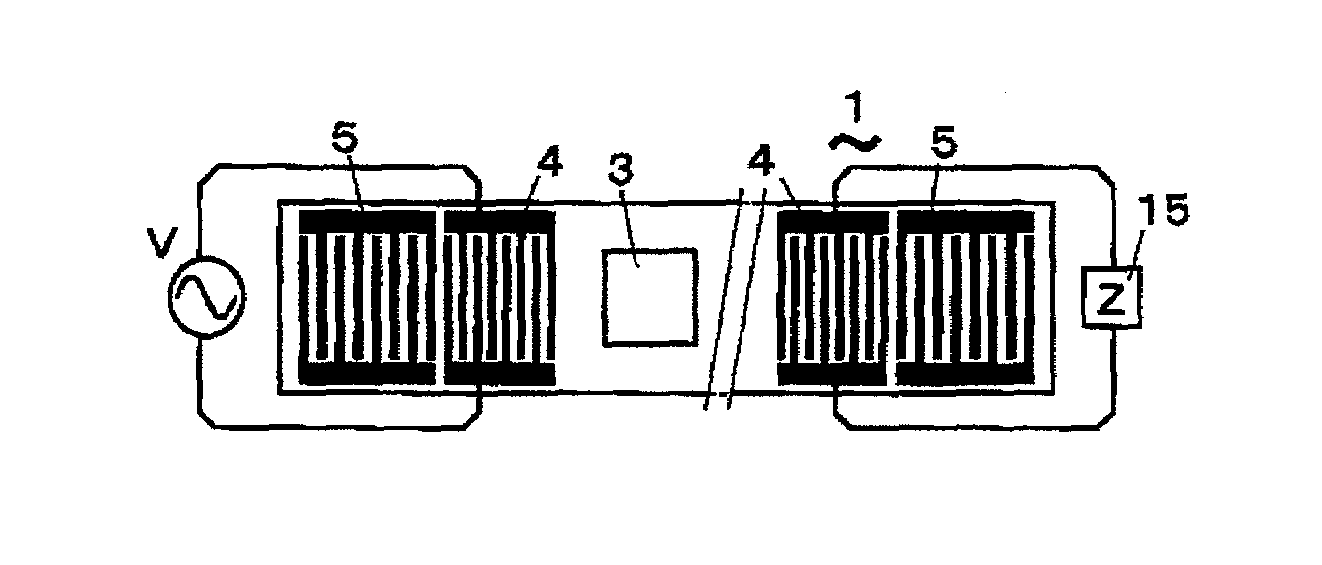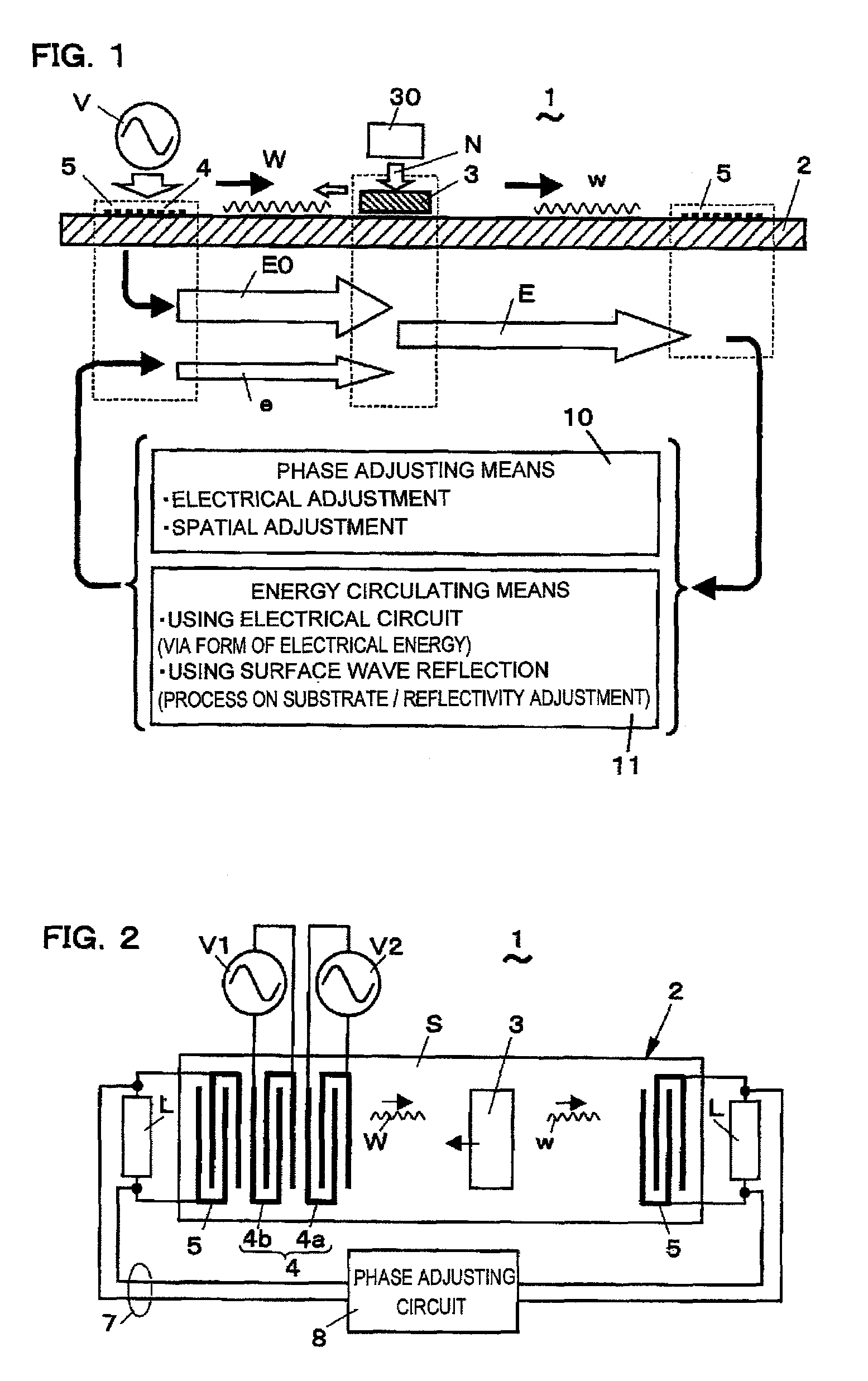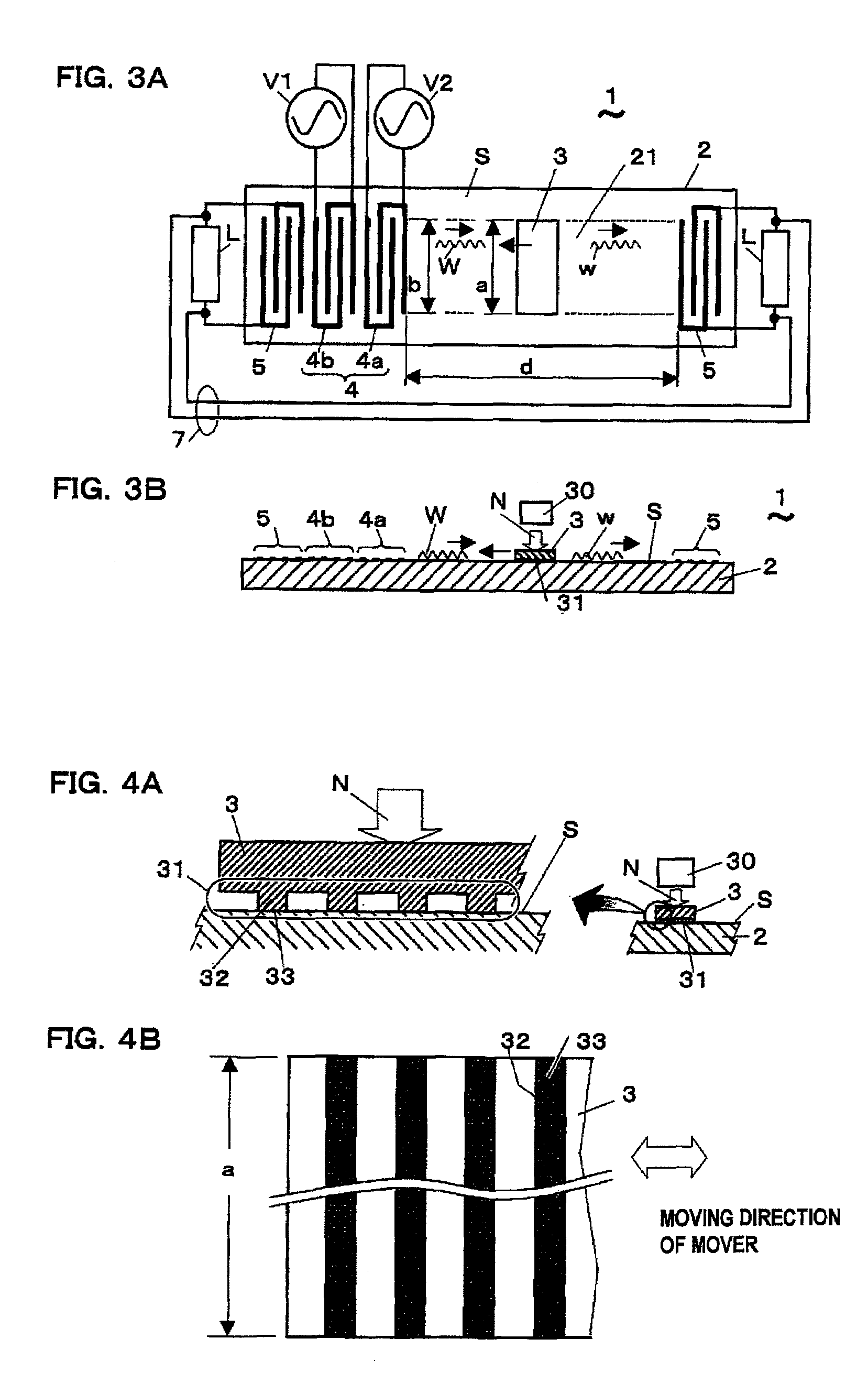Surface acoustic wave motor
a surface acoustic wave and motor technology, applied in piezoelectric/electrostrictive/magnetostrictive devices, piezoelectric/electrostriction/magnetostriction machines, electrical apparatus, etc., can solve the problem of low energy supply efficiency and the limitation of the power reduction of the conventional surface acoustic wave motor to drive the slider b>3, and achieve the effect of efficient energy recovery
- Summary
- Abstract
- Description
- Claims
- Application Information
AI Technical Summary
Benefits of technology
Problems solved by technology
Method used
Image
Examples
first embodiment
[0100]FIG. 2 shows a surface acoustic wave motor 1 of a first embodiment. The surface acoustic wave motor 1 comprises: a surface acoustic wave substrate 2; recovery interdigital electrodes 5 placed on its surface S forward and backward in the direction of travel of a surface acoustic wave (rightward and leftward in the drawing) to make an electromechanical conversion between electrical energy and mechanical energy for recovering and supplying energy; a driving interdigital electrode 4 placed between the two recovery interdigital electrodes 5 and connected to external power supplies V1 and V2 for complementing energy; a slider 3 placed to contact the surface S of the surface acoustic wave substrate 2 while being provided with an applied pressure N by pressure applying means 30; wiring 7 for connecting the two recovery interdigital electrodes 5; and a phase adjusting circuit 8 inserted in the wiring 7.
[0101]The surface acoustic wave substrate 2 and the slider 3 in the surface acoustic...
second embodiment
[0108]FIGS. 3A and 3B show a surface acoustic wave motor 1 of a second embodiment, while FIGS. 4A and 4B show a structure of a contact portion of a slider 3 with a surface acoustic wave substrate 2 in the surface acoustic wave motor 1. Differently from the above-mentioned surface acoustic wave motor 1 of the first embodiment, this surface acoustic wave motor 1 does not have a phase adjusting circuit 8. The phase adjustment in this surface acoustic wave motor 1 is made by an adjustment of the width of the slider 3 and the widths of the respective interdigital electrodes, and by an adjustment of the length of a region in which the surface acoustic waves W and w are present. In other words, the phase adjusting means 10 in this surface acoustic wave motor 1 uses a spatial adjustment process to make a phase adjustment before energy recovery. Except for these points, the surface acoustic wave motor 1 of the second embodiment is similar to the above-mentioned surface acoustic wave motor 1 ...
third embodiment
[0117]FIGS. 5A to 5C show a surface acoustic wave motor 1 of a third embodiment, while FIGS. 6A to 6C show reflectivity characteristics of interdigital electrodes. The surface acoustic wave motor 1 of the present embodiment circulates recovered energy in the form of mechanical energy to the supply side. This is the point in which it is different from the surface acoustic wave motors 1 of the above-mentioned first and second embodiments. More specifically, the recovery and circulation of energy are performed by a surface acoustic wave traveling reversely on a surface S of a surface acoustic wave substrate 2, namely as a reflected wave, in the form of mechanical energy, not in the form of electrical energy. The energy circulating means 11 in the present embodiment is the surface S of the surface acoustic wave substrate 2.
[0118]The surface acoustic wave motor 1 of the present embodiment comprises: the surface acoustic wave substrate 2; a pair of interdigital electrodes 4 placed opposit...
PUM
 Login to View More
Login to View More Abstract
Description
Claims
Application Information
 Login to View More
Login to View More - R&D
- Intellectual Property
- Life Sciences
- Materials
- Tech Scout
- Unparalleled Data Quality
- Higher Quality Content
- 60% Fewer Hallucinations
Browse by: Latest US Patents, China's latest patents, Technical Efficacy Thesaurus, Application Domain, Technology Topic, Popular Technical Reports.
© 2025 PatSnap. All rights reserved.Legal|Privacy policy|Modern Slavery Act Transparency Statement|Sitemap|About US| Contact US: help@patsnap.com



